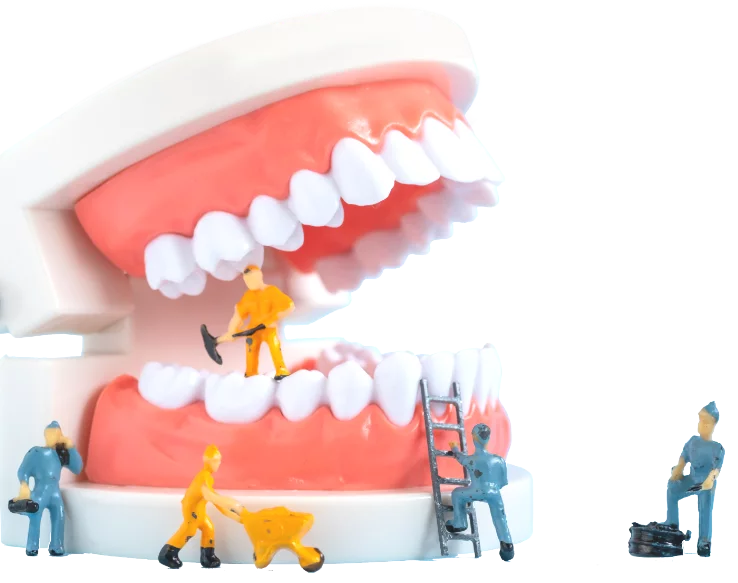
ORAL HEALTH & DENTISTRY
The Importance of a Confident Smile
Correlation between Confidence and Success
- Planned career goals
- Risk takers
- Take on challenging tasks
- Express strong views to authority figures
- Stand out in professional circles
Correlation between Confidence and a Good Smile
This is because the physical act of smiling releases dopamine, endorphins, and serotonin in your brain. All three substances affect your body positively, such as relieving stress, lowering blood pressure, and lifting your mood.
Different Treatment Options to Improve your Smile
Teeth Whitening
Teeth can lose their shiny, white luster no matter how well you brush and floss. Tooth whitening treatments are one way to turn a dull yellow into a sparkling white.
Whitening products contain either hydrogen peroxide or carbamide peroxide. Both of those bleaches break stains into smaller pieces. Smaller stain pieces are less concentrated, thus, giving your teeth a brighter appearance.
- Stain removal toothpaste – Toothpaste can remove stains thanks to mild abrasives. Whitening toothpaste has additional polishing agents that aid in stain removal.
- Chairside bleaching – Your dentist applies bleach to your teeth during an office visit.
- At-home bleaching – Your dentist gives you everything you need to whiten your teeth at home. The kit includes a custom-made tray and bleach solution.
- Store-bought bleaching – There are numerous whitening products that you can buy over the counter. These include whitening strips, bleaching kits, and certain kinds of toothpaste. The bleaching agent concentration in these products is lower than what your dentist uses in the office.
Dental Crowns
A dental crown is a tooth-shaped cap that fits over your tooth. Patients might need crowns due to decay, tooth damage, protecting a weakened tooth, holding a dental bridge in place, or wear and tear over time.
- Metal
- Porcelain fused to metal
- Resin
- Ceramic or porcelain
- Pressed ceramic
New White Fillings
Most adults get a cavity or two. The easiest way to fix a cavity is with a filling. One type of filling used to repair cavities is composite resin filling.
According to the Dental Board of California, composite fillings are a mixture of powdered glass and plastic resin. The mixture is used for fillings, partial and complete crowns, veneers, inlays, and to repair broken teeth.
- Tooth Colored
- Durability
- Requires a single visit for fillings
- Minimal leak risk when bonded to the enamel
- Corrosion-resistant
- Holds up well to constant biting pressure
- Low to moderate need for repair or replacement
- Can result in tooth sensitivity
- Costs more than standard amalgam fillings
- Substance shrinks during the hardening process, increasing decay risk
- Multiple visits necessary for crowns, inlays, and veneers
- Can wear faster than enamel
Dental Cleanings
Speaking of dental checkups, regular teeth cleanings are a crucial tool to maintaining a pleasant smile but an overall healthy mouth.
Brushing your teeth manually or with an electric toothbrush is great. But a professional cleaning from a dental hygienist provides a more thorough treatment.
Straightening Options
Perhaps your smile is dampened with a crooked tooth or two? You don’t have to settle. There are a couple of different teeth straightening options that will give you the smile you deserve. Click here to read a full-length article on different options.
Braces
Braces are a fixed appliance applied by an orthodontist to correct misaligned or crowded teeth or jaws. They are more common among those people who are in their teenage years. But braces can benefit adults too. The end goal of dental braces is to align your teeth and jaws to produce an even bite and correct your smile in the process.
- Oral exam – An orthodontist will conduct a full exam of your mouth, including your teeth and jaws.
- X-rays – You’ll undergo a series of x-rays to determine the true positioning of the upper and lower teeth.
- Dental cast – Your orthodontist will have you bite into a plaster molding to make a model of your teeth. This allows the orthodontist to be able to evaluate your entire bite.
- Tooth extraction – Sometimes, tooth removal is necessary due to an overcrowded mouth. This will allow your teeth to fit together properly when the realignment is complete.
- Jaw repositioning – Severe cases require the surgical repositioning of the jaw prior to orthodontics.
- Brackets – They are typically attached to the front tooth surfaces. Brackets can be made from stainless steel, clear ceramic, or tooth-colored ceramic.
- Ring-like bands – These bands encircle the molars. The bands are made from either stainless steel or titanium. The connecting wire is secured into a tube that is attached to the band.
- Archwire – This is the wire that connects to all the brackets and the bands. The archwire drives teeth movement.
- Elastic or metal ties – These connect the wire to the brackets.
- Headgear – This connects to the braces. It is usually worn only at night and is more common with complex bite cases. The headgear helps create additional pressure.
Clear Aligners
Clear aligners are an alternative to traditional braces. Like braces, they are designed to slowly move your teeth a little at a time. But unlike braces, which are a combination of many pieces working together to reposition your teeth, clear aligners are plastic replicas of your teeth.
Find a Dentist Near You to Kickstart Your Confidence
Consult your dentist to discuss the various methods and which one is best to give you a smile makeover as you head into the new year. Or, check out Find a Dentist tool to find a dentist near you for your smile improvement needs. You can read patient reviews, peruse staff bios, and schedule an appointment online with a click of your mouse.
Find your trusted, local dentist today!
Sources
- https://www.mayoclinic.org/tests-procedures/braces/about/pac-20384607
- https://www.aaoinfo.org/blog/how-orthodontics-works-braces/
- https://www3.aaoinfo.org/blog/orthodontic-treatment-with-clear-aligners/
- https://www.mouthhealthy.org/en/az-topics/c/composite-fillings
- https://www.mouthhealthy.org/en/az-topics/w/whitening
- https://my.clevelandclinic.org/health/treatments/10923-dental-crowns
- https://www.colgate.com/en-us/oral-health/dental-visits/how-does-a-tooth-polishing-procedure-work
- https://www.psychologytoday.com/us/blog/communication-success/201401/7-keys-establishing-confident-impression
- https://www.psychologytoday.com/us/blog/cutting-edge-leadership/201206/there-s-magic-in-your-smile
Smile Generation blog articles are reviewed by a licensed dental professional before publishing. However, we present this information for educational purposes only with the intent to promote readers’ understanding of oral health and oral healthcare treatment options and technology. We do not intend for our blog content to substitute for professional dental care and clinical advice, diagnosis, or treatment planning provided by a licensed dental professional. Smile Generation always recommends seeking the advice of a dentist, physician, or other licensed healthcare professional for a dental or medical condition or treatment.




